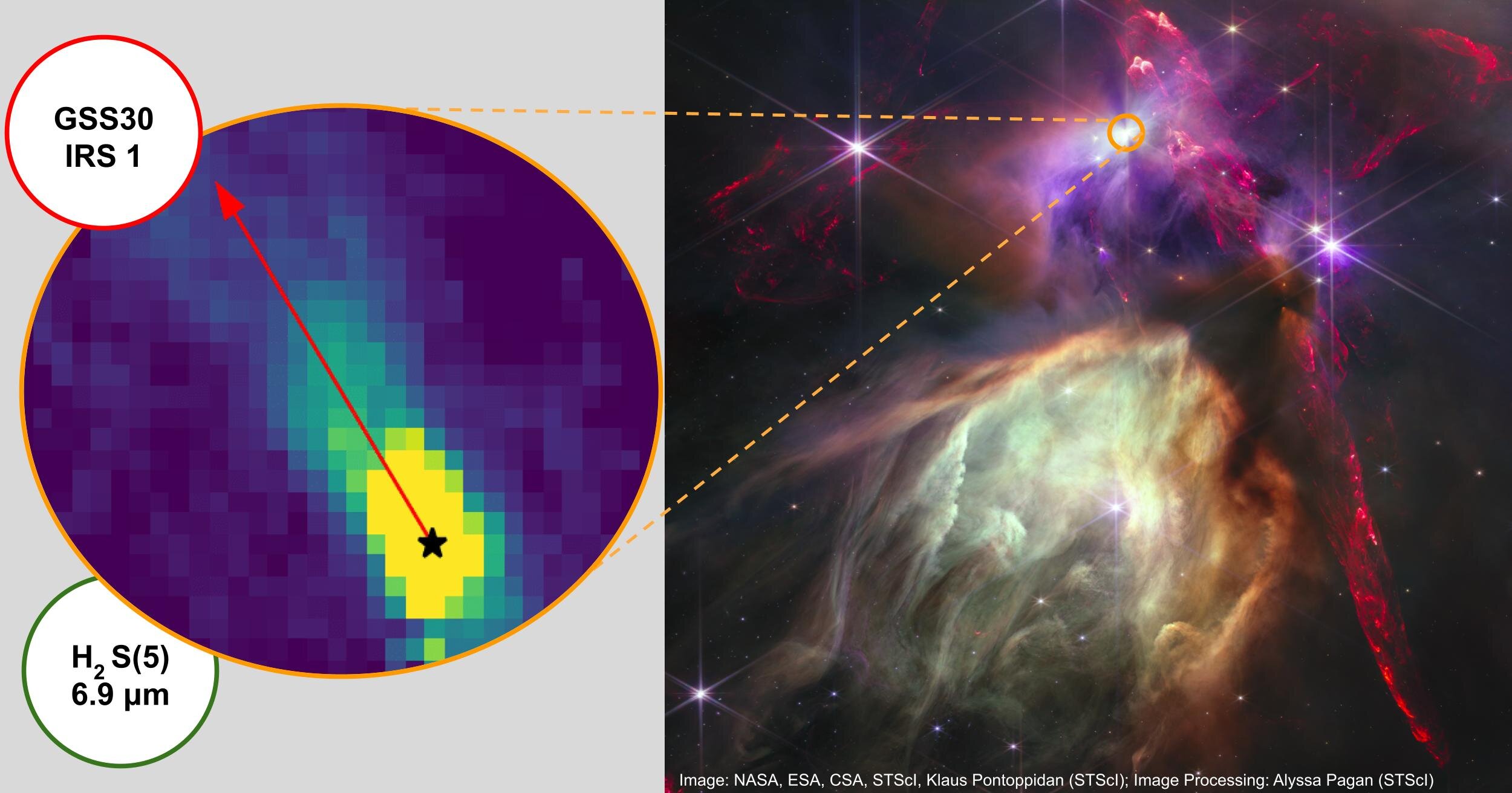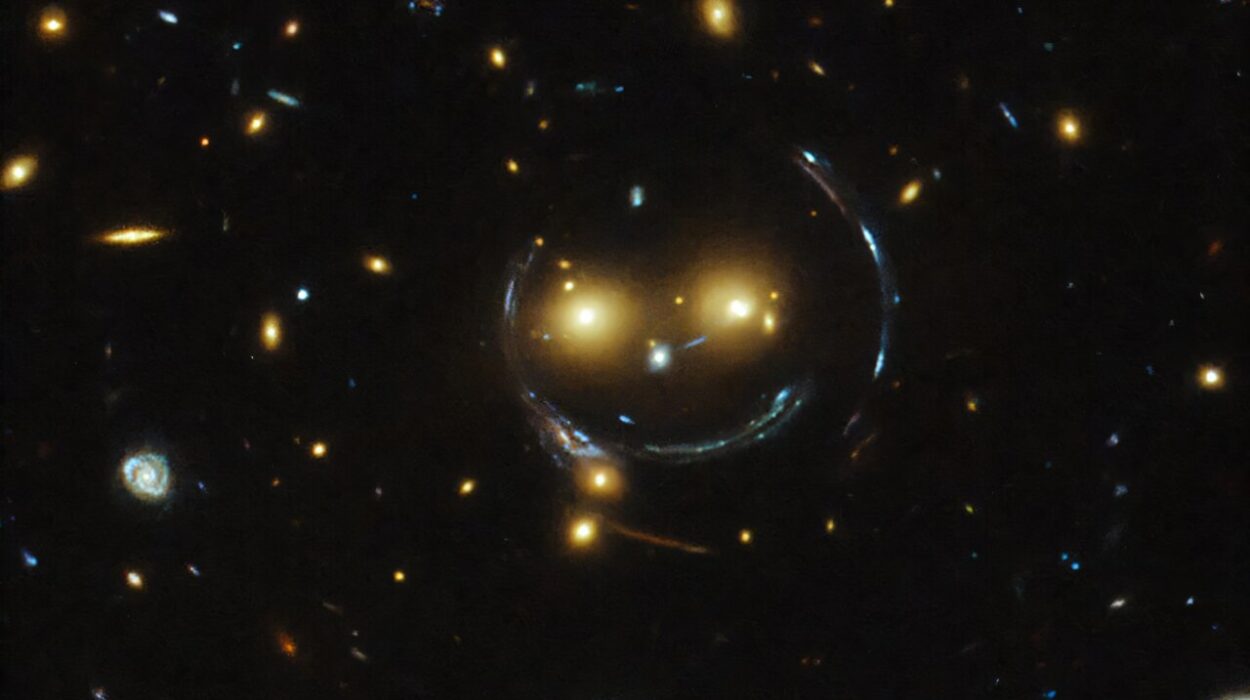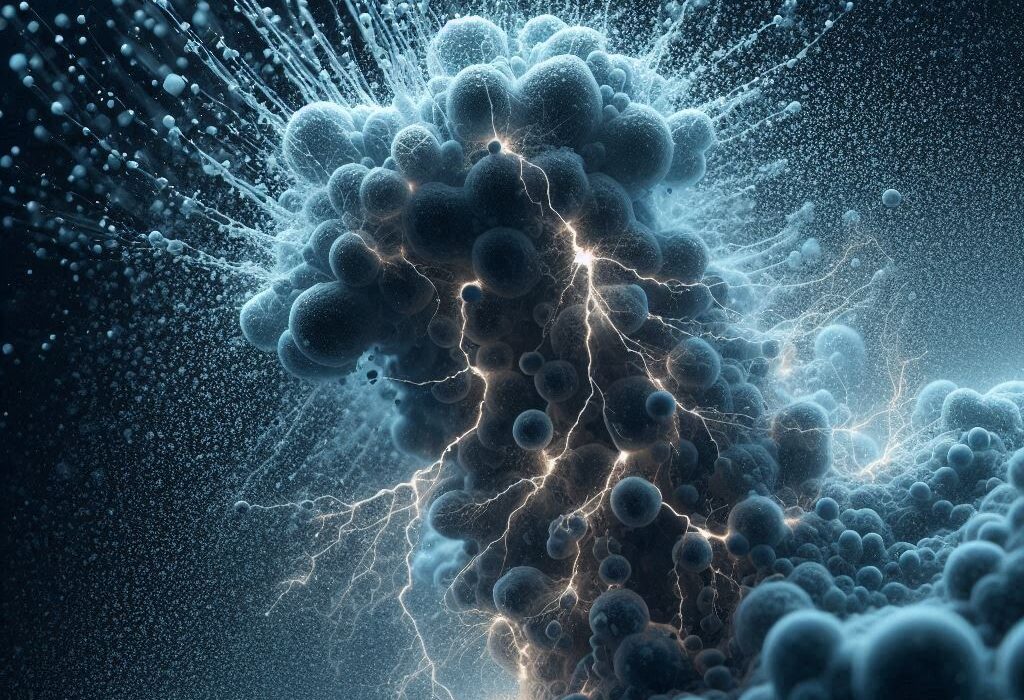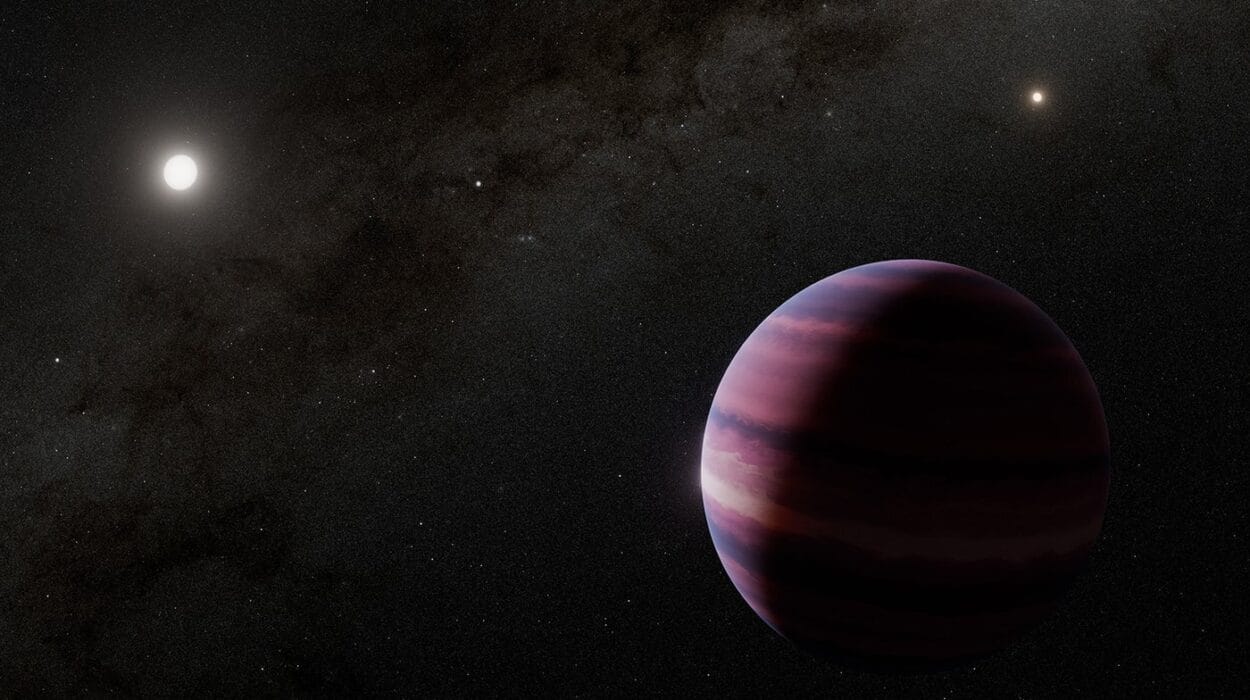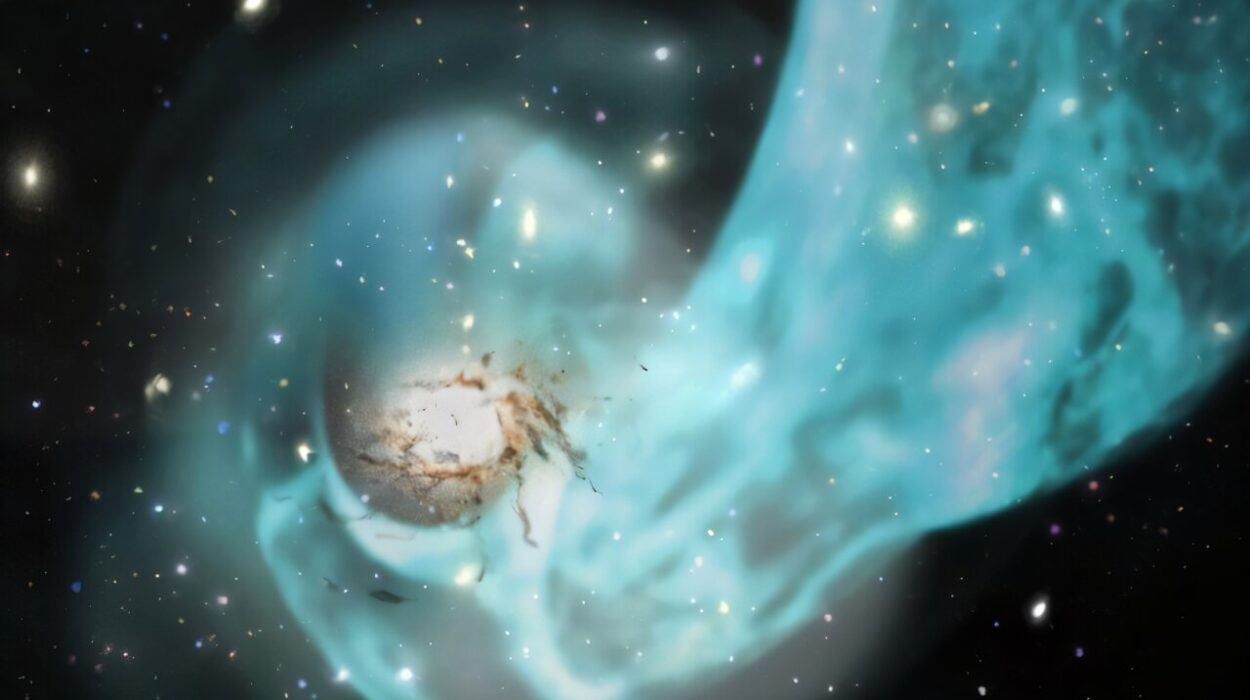In the cold, dark regions of space, young stars are quietly taking shape, hidden within dense clouds of gas and dust. These stars, still in their infancy, are surrounded by material that is being drawn toward them, creating a dramatic process known as accretion. As they grow, these protostars launch powerful jets of material outward, creating spectacular outflows. For decades, astronomers have studied these outflows to better understand how stars are born. But now, a surprising discovery has challenged long-standing assumptions about the nature of star formation, leaving scientists rethinking how stars form and evolve.
The Unlikely Presence of Ultraviolet Radiation
In a groundbreaking study led by Iason Skretas, a doctoral student at the Max Planck Institute for Radio Astronomy (MPIfR), and Dr. Agata Karska from Nicolaus Copernicus University, astronomers used the James Webb Space Telescope (JWST) to investigate young stars in the Ophiuchus region, a stellar nursery located 450 light-years away from Earth. What they found was unexpected: ultraviolet (UV) radiation in the vicinity of protostars—young, forming stars still embedded in their parent molecular clouds.
“Young stars are not capable of being a source of radiation; they cannot ‘produce’ radiation. So we should not expect it. And yet we have shown that UV occurs near protostars,” says Dr. Karska. This discovery is a puzzle for astronomers, as it challenges the traditional understanding that young stars cannot emit significant amounts of UV light.
The Mystery Deepens: Where Is This UV Radiation Coming From?
The presence of UV radiation in these regions is a mystery, as it has long been assumed that only older, fully formed stars could produce such radiation. The research team, however, demonstrated that UV radiation was indeed present around these young stars, and it was having a significant impact on the surrounding material. This raised an intriguing question: Where is this radiation coming from?
At first, the researchers speculated that the UV radiation might be coming from massive, nearby stars. These stars are known to emit strong UV light, and they are often found in the vicinity of star-forming regions. Perhaps these external sources of radiation were influencing the young stars in the Ophiuchus cloud. But as the researchers dug deeper, they found no evidence to support this hypothesis.
“One possibility is that the UV radiation originates from nearby massive stars that illuminate the birthplaces of the next generation of stars,” says Friedrich Wyrowski, a co-author of the study. However, after carefully analyzing the data, the researchers found that UV radiation from external sources could not explain the patterns they were seeing.
JWST’s MIRI Instrument Reveals Surprising Details
To uncover the source of the UV radiation, the team turned to the powerful tools aboard the JWST. They focused their observations on five young stars in the Ophiuchus molecular cloud, using the MIRI (Mid-Infrared Instrument) to capture details that were previously out of reach. The MIRI instrument allowed the researchers to observe the region in wavelengths of light that are otherwise blocked by Earth’s atmosphere. These observations provided critical information about the chemical and physical properties of the surrounding gas and dust.
“We wanted to take a closer look at protostars, i.e., young stars that are still forming deep inside their parent molecular clouds. As protostars accrete mass, they launch part of it outward in the form of jets,” explains Skretas. These jets are the most visible indicators of star formation, and they provide valuable clues about the environment around the protostar. By studying the impact of UV radiation on the molecular hydrogen (H2) surrounding the young stars, the team hoped to unlock new insights into the processes that shape these stars.
Molecular hydrogen is of particular importance to astronomers, as it is the most abundant molecule in the universe. However, its structure makes it difficult to observe directly in molecular clouds, where temperatures are too low to excite the molecule. The shock waves produced by jets from young stars, however, compress and heat the surrounding gas, creating bright H2 emission that can be detected by the MIRI instrument.
Ruling Out External UV Sources
As the team sifted through the data, they came to an important realization: the UV radiation affecting the molecular hydrogen in the Ophiuchus region could not have come from external sources. After eliminating the possibility of nearby massive stars influencing the young stars, the team concluded that the UV radiation must be originating from within the protostars themselves.
“Using two methods to estimate the external UV radiation, we showed that UV radiation—in terms of external conditions—varies significantly between our protostars, and therefore we should see differences in molecular emission. As it turns out, we don’t see them,” says Skretas. This led the researchers to reject the hypothesis of an external UV source. Instead, they concluded that the UV radiation is intrinsic to the young stars themselves.
A New Chapter in Star Formation Research
This discovery has significant implications for the study of star formation. For years, scientists have developed models of star formation based on the assumption that young stars are not powerful enough to emit significant amounts of UV radiation. But the presence of UV radiation in the regions around these protostars challenges this assumption. The findings suggest that future models of star formation will need to account for the production of UV radiation by the protostars themselves.
Dr. Karska emphasizes the importance of these findings: “We can say with certainty that UV radiation is present in the vicinity of the protostar, as it undoubtedly affects the observed molecular lines. Therefore, its origin has to be internal.”
As the team looks ahead, they plan to conduct further research using JWST to examine not just the gas but also the composition of dust and ices in the surrounding material. By expanding their observations, the scientists hope to pinpoint the precise mechanisms responsible for the production of UV radiation in young stars.
Why This Discovery Matters
The implications of this discovery are profound, as they may reshape our understanding of how stars form and evolve. By demonstrating that UV radiation can be produced by young stars during their formation, the research team has opened up new avenues for studying the early stages of star development. This insight could help astronomers refine their models of how stars form from molecular clouds, shedding light on the processes that lead to the birth of stars, planets, and potentially even life.
As more data is collected and analyzed, scientists may uncover even more surprises about the hidden lives of young stars and the forces that shape their environments. The ongoing work with JWST will undoubtedly provide critical insights into the complex, dynamic process of star formation, bringing us one step closer to understanding the cosmic origins of the stars that light up our universe.
More information: I. M. Skretas et al, UV-irradiated outflows from low-mass protostars in Ophiuchus with JWST/MIRI, Astronomy & Astrophysics (2025). DOI: 10.1051/0004-6361/202554977
